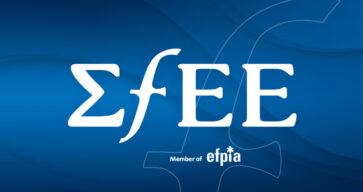World Antimicrobial Awareness Week (18-24 November): Finding a solution to the exacerbated microbe resiliance risk should be everybdy’s priority
Press Release
AMR is a silent pandemic and the next major threat to public health. According to the Centre for Clinical Epidemiology and Patient Outcomes (CLEO) the prevalence of in-hospital infections in Greece, during the pre-pandemic period, rose at 10%, while the annual toll of in-hospital infections is estimated at more than 3,000 people, in the hospitals pertaining to the National Health System alone. Furthermore, according to new data communicated by the European Centre for Disease Prevention and Control (ECDC), our country registered a descending trend in the use of antibiotics, remaining, however, in the fourth highest place amongst the 29 countries in European Union and European Economic Area. The antimicrobe medicines consumption in Greece per 1,000 inhabitants is significantly higher than the European average (23.5 versus 16.4), both in the community and hospital environment.
Greece registers steadily higher resilience rates to hospital pathogens than the EU average, to microbes such as Klebsiella (Klebsiella pneumoniae). The resilience to third-generation antibiotics, such as fluoroquinols, was higher in Greece than the EU average (66.9% versus 31.5%). According to the European Centre for Disease Prevention and Control (ECDC), 66.5% of the pneumonia cases caused by Klebsiella in Greece are resistant to third-generation cephalosporines, the antimicrobials usually administered in hospitals, while the average weighted population in EU/EEA was 31.3%. The Klebsiella germ resilience to carbapenem in Greece is 58.3% higher than in the average weighted EU/EEA population (7.9%)
The new ECDC data shows that throughout the EU, Iceland, and Norway more than 35,000 people die annually, due to infections resistant to antibiotics. The EU incurrs an additional health care cost of 1.5 billion Euros due to these infections, as well as great losses in productivity. Although hospitals and primary care providers in Europe have reduced the use of antibiotics by 23% over the last decade, the use of “back-up” antibiotics, which are destined to fight multi-resilient infections, has more than doubled.”
The World Bank estimates that by 2050, 10 million people per year could die if new antimicrobials are not found. Without effective prevention and treatment of infections, medical procedures such as organ transplantation, cancer chemotherapy, and major surgery will become too dangerous to perform. If COVID-19 has taken the world by surprise, the impact of AMR can be foreseen.
According to new research for the European Federation of Pharmaceutical Industries and Associations (EFPIA) new antibiotics are urgently needed to help tackle the global health threat of antimicrobial resistance (AMR), as infections become more resistant to current treatments.
The figures support the implementation of a Transferable Exclusivity Extension (TEE) proposal – showing it to be the most credible and workable solution for driving antibiotic research in Europe. The system could bring two new antibiotics a year to patients over the next decade, preventing deaths associated with AMR every year in the EU.
TEE works by providing the developer of an eligible, novel antibiotic a voucher that can be used to extend the exclusivity of one of its own medicines for a period of time, or sold to another company, thereby paying for successful antibiotic research.
According to the cost/benefit analysis carried out for EFPIA, the net positive benefits that TEE can deliver are quantified for the first time. This includes the clinical benefit to patients of treating life-threatening hospital-based infections like sepsis, and complex infections including severe UTIs, as well as the vast benefits that antibiotics play in supporting and enabling surgical and medical interventions. It also includes the benefits of reducing transmission of infections among the population, the insurance value of having treatments in case of major incidents and productivity gains from enabling patients to get back to work.
The report models TEE use in six countries – chosen to give an accurate reflection of the different medicines markets across the EU27*. The table shows the cost savings generated for a new antibiotic incentivised by the TEE over the next decade.
| Value Element | 10 year benefits of TEE by Member State € Millions | |||||
| France | Germany | Italy | Spain | Greece | Poland | |
| Clinical Benefit | 54-75 | 23-33 | 87-120 | 18-25 | 8-11 | 18-25 |
| Productivity | 69 | 30 | 111 | 23 | 10 | 23 |
| Transmission | 335-466 | 414-575 | 296-411 | 236-327 | 53-74 | 189-262 |
| Diversity | 57-79 | 70-97 | 50-69 | 40-55 | 9-13 | 32-44 |
| Enablement | 277-644 | 342-684 | 245-489 | 195-390 | 44-88 | 156-312 |
| Insurance | 43-165 | 54-204 | 38-146 | 30-116 | 7-26 | 24-93 |
It is recognised that there is no one size fits all solution for global incentivisation of R&D for antibiotics, but the research suggests that not only is TEE is the most viable option for the EU, it would also deliver significant net benefits to all Member States. Antibiotics are the foundation of medical and surgical interventions. Authors say the cost-savings and benefits of TEE incentivising new antibiotics justify its use across other therapy areas.
Speaking about the report, EFPIA Director General, Nathalie Moll, said: “Finding a solution to the increasing danger of antibiotic resistance should be a priority for us all, and ensuring companies invest in R&D in this area is critical to achieving success.
Numerous ideas to stimulate new research have been proposed across the public and private sectors, and this research leaves little doubt that TEE is the best solution for Europe. Not only can TEE deliver new antibiotics it will bring significant economic benefits to each Member State.
The European Commission has committed to action on AMR and we believe TEE will give Europe the tools it needs to protect patients.”


